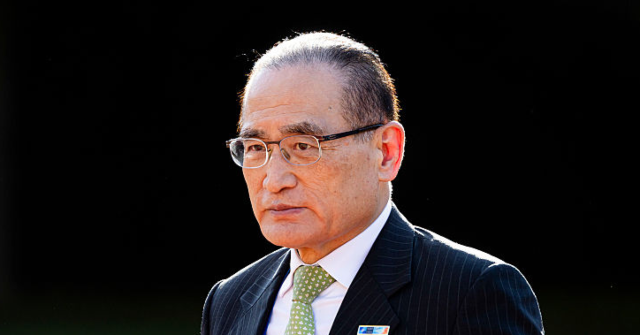 Paris-based Galerie Chenel, which specializes in Roman and Greek marbles, at TEFAF. Courtesy of the gallery
Paris-based Galerie Chenel, which specializes in Roman and Greek marbles, at TEFAF. Courtesy of the galleryA new E.U.-wide regulation coming into effect on June 28 is set to impact the trade of antiquities and artworks more than two centuries old. Regulation EU 2019/880 will require European auction houses, galleries and antique dealers to provide detailed provenance research and documentary evidence for all cultural goods over 200 years old that originate outside the E.U. This measure builds on a 2019 regulation aimed at combating terrorism financing through the illicit trade of art and artifacts. It also reflects growing global scrutiny of objects looted during colonial rule or acquired under coercion, amid a rising number of restitution and repatriation cases in recent years.
“The new regulation places additional burdens on the art market in the form of extra paperwork and time,” art lawyer Leila A. Amineddoleh (a new face on last year’s Business of Art Power List) told Observer. “Inevitably, there is also a financial cost.” She pointed out that while the regulation’s goals—combating terrorism and illicit trafficking—are commendable, it will impose additional burdens on both buyers and sellers. “The regulation is particularly damaging for artworks that are relatively inexpensive—those over $18,000 but under $100,000. Collectors don’t want to invest extra time and financial resources in works that aren’t valued in the six figures.” Compliance is also inherently difficult, according to Amineddoleh, as collectors and dealers often cannot determine the precise origin of a piece, let alone whether it was lawfully acquired, once centuries have passed. “It makes dealing in art more challenging.”
In a previous interview with Observer, Amineddoleh explained that establishing rightful ownership and clean provenance is difficult in part because not everyone maintains proof of ownership. When antiquities are looted, for instance, no record of their origins may survive, making it difficult for nations to prove objects were stolen. Historians and experts play a crucial role here because they can help uncover where works came from or trace objects’ provenance (ownership history).
In response to these issues, Regulation EU 2019/880 allows at least limited legal flexibility. If a country of origin cannot be determined, an importer may instead provide evidence that cultural goods were lawfully exported from the last country where they resided for at least five years.
Antiquities and antiques dealers in the European Union were already facing commercial pressure from U.S. reciprocal tariffs introduced on April 2, 2025, which imposed a 20 percent duty on imports from the E.U. While fine art is exempt, the tariffs still apply to antiquities, decorative objects and other collectibles. The new regulation will likely result in higher costs and delays due to more burdensome procedures. Dealers in countries with stricter cultural heritage laws, such as Italy, are more accustomed to this bureaucracy: there, any item created by a deceased artist more than 70 years ago is classified as a cultural good, requiring an export license from the Ministry of Culture—a complex process that can prevent an object from ever leaving the country.
SEE ALSO: Lessons On Institutional Sustainability From MCA Chicago
“While we pride ourselves on conducting the most thorough provenance research and due diligence possible, this new directive is concerning,” Edmondo di Robilant, co-founder of Robilant+Voena and a prominent dealer of Old Master paintings, told Observer. The gallery, which participates in international fairs like Frieze Masters and TEFAF, operates between Milan and London and has expanded to New York. “Post-Brexit, we’ve been inundated with new regulations, making transporting artworks cumbersome and very expensive. While one more layer of requirements may not seem significant on its own, it adds to the burden of an already difficult process.” He said that while he understands the rationale behind these laws, they do not make running a business any easier. “All we can do is continue to provide the fullest possible provenance for our artworks.”
 Robilant+Voena presenting works by Harumi Klossowska de Rola, Alessandro Magnasco and Joshua Reynolds at TEFAF Maastricht, 2025. Robilant+Voena
Robilant+Voena presenting works by Harumi Klossowska de Rola, Alessandro Magnasco and Joshua Reynolds at TEFAF Maastricht, 2025. Robilant+VoenaWhile Directive 2022/542, adopted on April 5, 2022, aimed to facilitate trade by harmonizing VAT rates on art across the E.U.—making “works of art, collectors’ items and antiques” eligible for reduced rates (minimum 5 percent) in all Member States by January 1, 2025—the new regulation could do the opposite, leading to higher costs and longer timelines.
In December 2024, the United Nations General Assembly introduced a new resolution—A/79/L.16, titled “Return or Restitution of Cultural Property to the Countries of Origin,” recognizing a surge in the illicit trafficking of cultural artifacts—ranging from art to manuscripts—especially items illegally removed before the 1970 UNESCO Convention took effect. Supported by over 140 nations, the resolution requires member states to develop robust legal frameworks for restitution and prevent illicit trade. UNESCO is also developing a “Virtual Museum of Stolen Cultural Objects,” set to launch in 2025.
Meanwhile, the global antiquity market, like the international art market in general, has operated with minimal due diligence and transparency for decades. In the past five years, several regulations at both the E.U. and international levels have rapidly changed the situation.
Beginning with Directive (EU) 2018/843—better known as the 5th Anti-Money Laundering Directive (AMLD5)—art dealers, galleries and auction houses were required for the first time to comply with anti-money laundering regulations for all transactions of €10,000 or more. This shift forced many dealers to expand their staff to handle the new compliance demands, including verifying the identity of buyers through Know Your Customer (KYC) checks, identifying the beneficial owner when acting on behalf of another party and assessing the origin of funds. Entities are also required to retain transaction records for at least five years and report any suspicious activity to their national Financial Intelligence Units (FIUs) without notifying the client. With the upcoming EU Anti-Money Laundering Authority (AMLA) set to begin direct supervision by 2026, compliance will become more centralized and rigorously enforced across all Member States.
Failure to comply with AML procedures is already having serious consequences for some dealers. Just last week, U.K. art dealer Oghenochuko Ojiri was sentenced to two years and six months in prison for failing to disclose sales of artworks to collector Nazem Ahmad, who has been under U.S. sanctions since 2019 for alleged ties to Lebanese militant group Hezbollah. Ojiri, founder of Ramp Gallery—later known as Ojiri Gallery—in East London, was a familiar face on U.K. daytime television, having appeared on the BBC’s Put Your Money Where Your Mouth Is and gained momentum in 2019 on Bargain Hunt.
In May, Ojiri pleaded guilty at the Central Criminal Court of England and Wales to eight counts of failing to disclose potential terrorist financing, having sold nearly £140,000 worth of artworks to Ahmad. On May 8, he became the first person charged under section 21A of the Terrorism Act 2000, according to the Metropolitan Police. The U.S. Treasury has accused Ahmad, who holds dual Lebanese-Belgian citizenship, of laundering significant sums of money for Hezbollah. In 2023, he was sanctioned for evading U.S. restrictions through approximately $440 million in art and diamond transactions.












 English (US) ·
English (US) ·  French (CA) ·
French (CA) ·  French (FR) ·
French (FR) ·